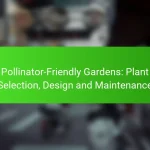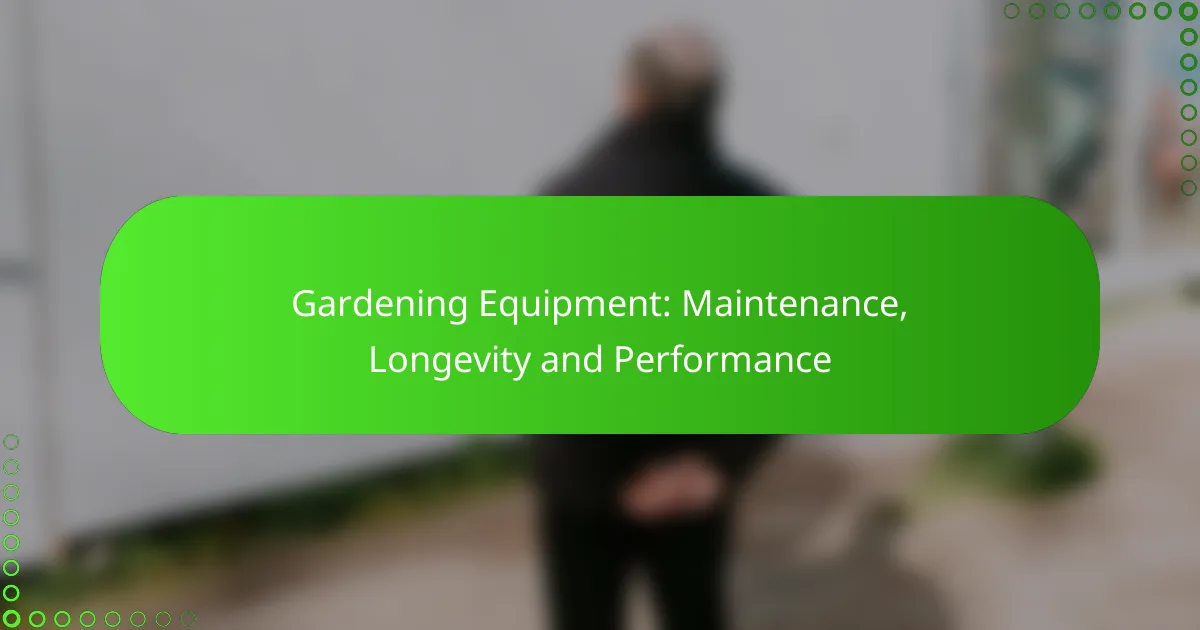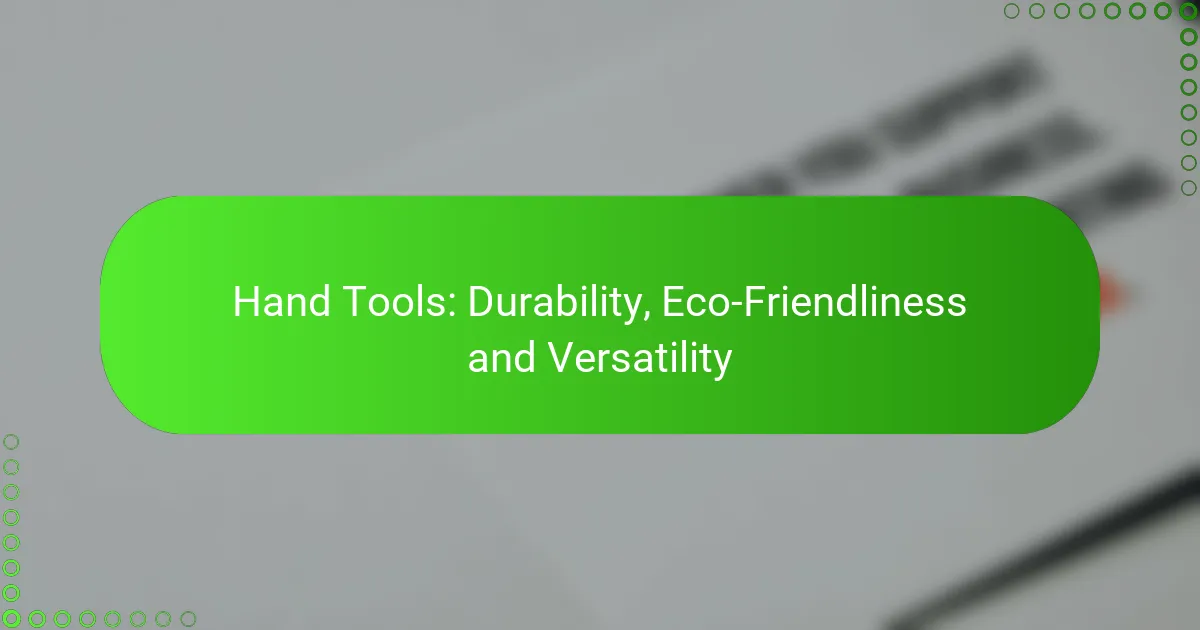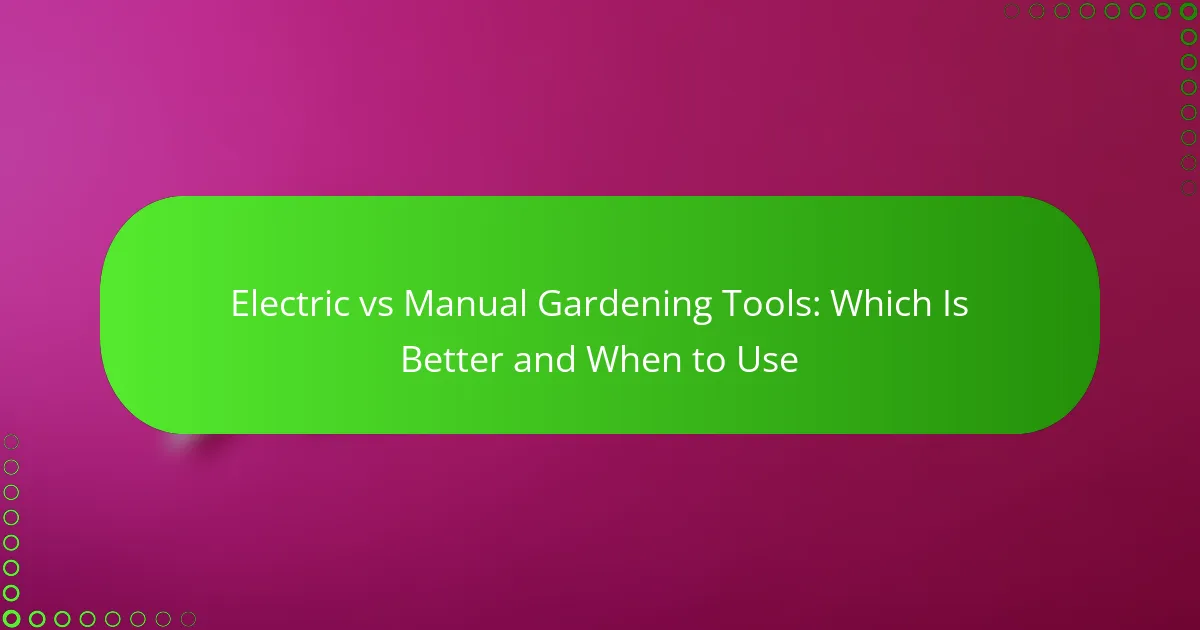Proper maintenance of gardening equipment is crucial for ensuring longevity and optimal performance. Essential tools such as hand trowels, pruning shears, and garden forks require regular care, including cleaning and sharpening, to keep them functioning effectively. By recognizing signs of wear and addressing them promptly, gardeners can maintain a productive and safe gardening experience.
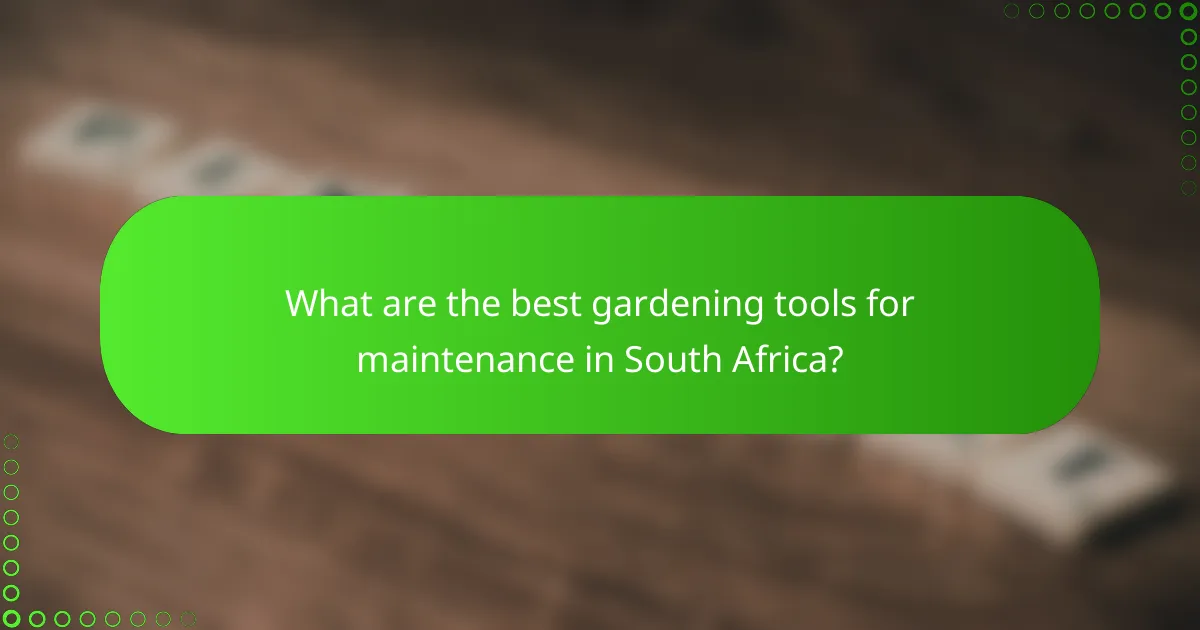
What are the best gardening tools for maintenance in South Africa?
The best gardening tools for maintenance in South Africa include essential items that enhance efficiency and effectiveness in garden care. Key tools such as hand trowels, pruning shears, garden forks, hoses with adjustable nozzles, and wheelbarrows are vital for maintaining healthy plants and a tidy garden.
Hand trowel
A hand trowel is a versatile tool ideal for digging, planting, and transferring soil. When choosing a hand trowel, look for one with a comfortable grip and a sturdy stainless steel blade to withstand South Africa’s varied soil types.
Regular maintenance includes cleaning the blade after use and storing it in a dry place to prevent rust. Consider investing in a trowel with a pointed tip for easier penetration into hard soil.
Pruning shears
Pruning shears are essential for maintaining plant health by trimming dead or overgrown branches. Opt for bypass pruning shears for clean cuts, which are especially beneficial for flowering plants and shrubs.
Ensure the blades are sharp and clean before each use to prevent disease spread among plants. Regularly oil the pivot point to maintain smooth operation and extend the tool’s lifespan.
Garden fork
A garden fork is crucial for aerating soil and breaking up compacted ground. Look for a fork with strong, durable tines that can penetrate tough soil, which is common in many South African gardens.
Use the garden fork to mix compost into the soil, improving drainage and nutrient availability. After use, clean the tines and store the fork upright to maintain its shape and functionality.
Hose with adjustable nozzle
A hose with an adjustable nozzle is vital for efficient watering, allowing you to control the flow and spray pattern. Choose a lightweight, durable hose that can withstand the South African sun without cracking.
Regularly check for leaks and kinks, and clean the nozzle to prevent clogs. Consider using a hose reel for easy storage and to prolong the hose’s life.
Wheelbarrow
A wheelbarrow is indispensable for transporting soil, plants, and tools around the garden. Select a model with a sturdy frame and a comfortable handle for easy maneuverability across various terrains.
Maintain your wheelbarrow by checking the tire pressure regularly and lubricating the wheel bearings. Keep it clean and store it in a sheltered area to protect it from the elements.
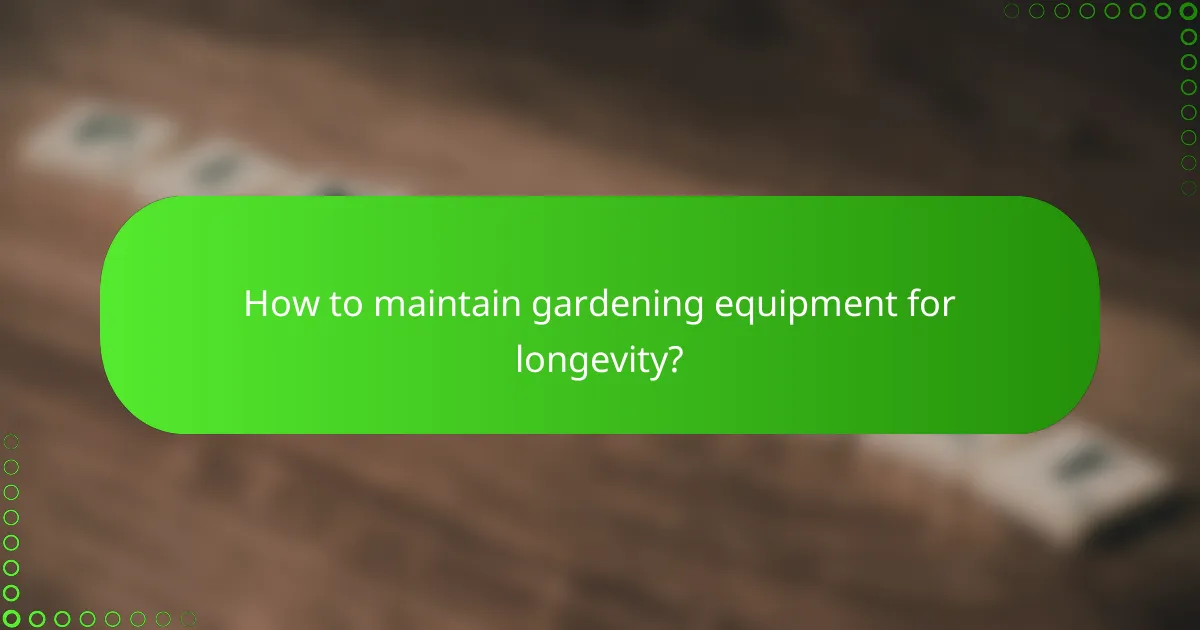
How to maintain gardening equipment for longevity?
To ensure gardening equipment lasts longer and performs better, regular maintenance is essential. This includes cleaning, proper storage, sharpening blades, and lubricating moving parts.
Regular cleaning
Cleaning gardening tools after each use prevents dirt and debris from causing rust and corrosion. Use a stiff brush or a cloth to remove soil, sap, and plant residue, and rinse with water when necessary.
For tools with wooden handles, wipe them down with a damp cloth and dry immediately to avoid moisture damage. Consider using a mild detergent for stubborn stains, but ensure all soap is rinsed off thoroughly.
Proper storage
Storing gardening equipment in a dry, sheltered location helps prevent weather-related damage. Ideally, tools should be hung on walls or stored in a shed to keep them off the ground and away from moisture.
For larger equipment like lawnmowers, ensure they are stored in a garage or shed, and cover them with a tarp or protective cover to shield them from dust and humidity.
Sharpening blades
Keeping blades sharp is crucial for efficient cutting and reducing strain on the equipment. Use a sharpening stone or file to maintain a clean edge, and do this at least once a season or more frequently if used heavily.
When sharpening, follow the manufacturer’s guidelines for the correct angle and technique to avoid damaging the blade. A sharp blade cuts cleanly, promoting healthier plants and reducing the risk of disease.
Lubricating moving parts
Regular lubrication of moving parts, such as hinges and gears, minimizes friction and wear. Use a light machine oil or a silicone spray, applying it to all moving components at least once a season.
Pay special attention to areas that experience the most movement, such as mower wheels and trimmer heads. Avoid over-lubricating, as excess oil can attract dirt and debris, leading to more maintenance issues.
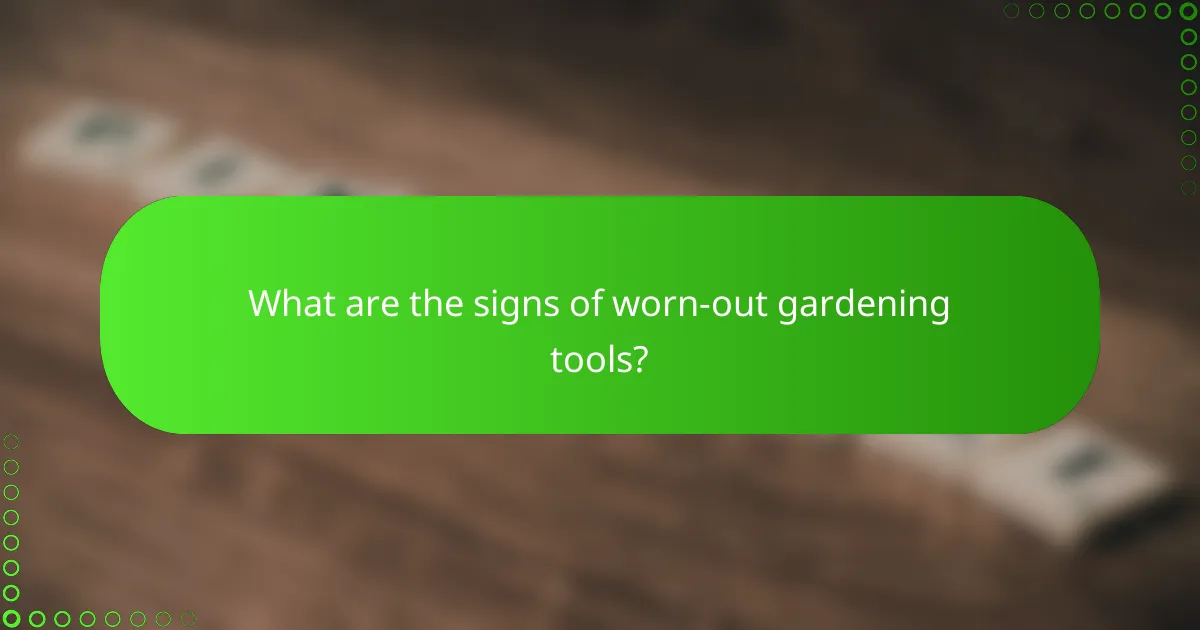
What are the signs of worn-out gardening tools?
Worn-out gardening tools exhibit several clear signs that indicate they may need repair or replacement. Recognizing these signs early can help maintain efficiency and safety in your gardening tasks.
Rust and corrosion
Rust and corrosion are common indicators of aging tools, especially those made of metal. If you notice reddish-brown spots or a flaky texture on your tools, it’s time to assess their condition.
While minor rust can sometimes be removed with a wire brush or rust remover, extensive corrosion can compromise the tool’s integrity. Tools that are heavily corroded should be replaced to ensure safety and performance.
Dull blades
Dull blades are a significant sign that your gardening tools are worn out. If you find that your pruners or shears are tearing rather than cutting cleanly, they likely need sharpening or replacement.
Regular maintenance, such as sharpening blades after every few uses, can prolong their lifespan. If sharpening does not restore the cutting edge, consider investing in new tools for better performance.
Loose handles
Loose handles can make gardening tools unsafe and ineffective. If you notice any wobbling or movement in the handle, it may be a sign that the tool is wearing out.
Check for screws or bolts that may need tightening. If the handle is cracked or significantly loose, replacing the tool is often the best option to avoid accidents.
Cracks in plastic parts
Cracks in plastic components can compromise the functionality of gardening tools. Inspect handles, guards, and other plastic parts for any signs of damage.
Even small cracks can worsen over time, leading to breakage during use. If you find cracks, consider replacing the tool to maintain safety and efficiency in your gardening activities.
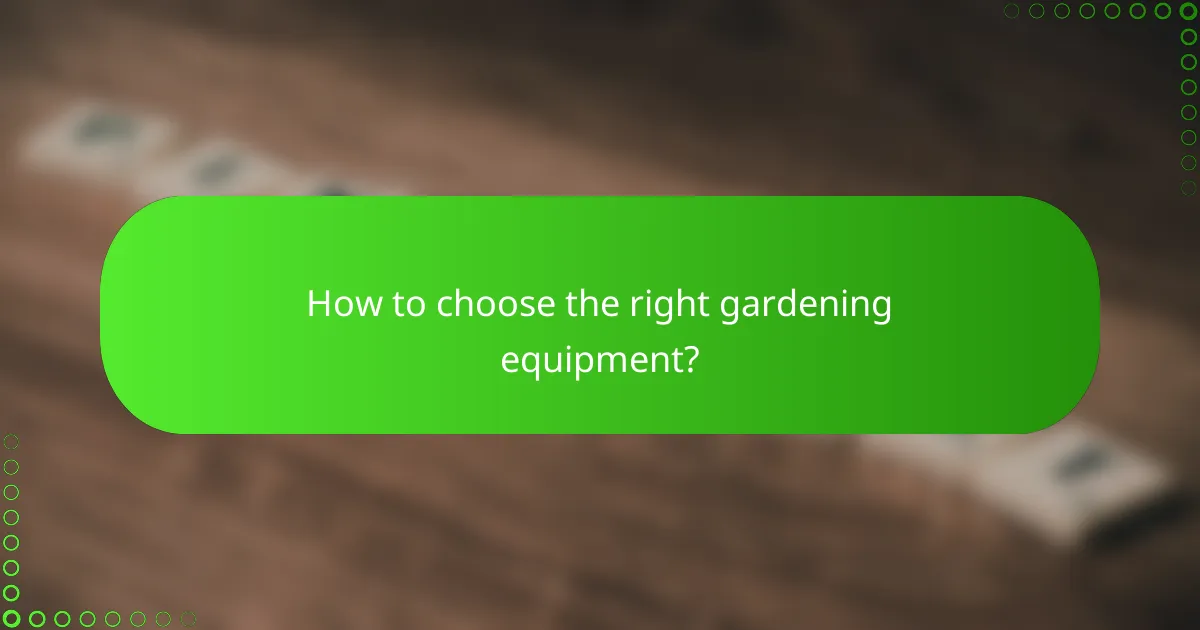
How to choose the right gardening equipment?
Choosing the right gardening equipment involves understanding your specific gardening needs and selecting tools that enhance efficiency and comfort. Consider factors such as the type of gardening you do, the ergonomics of the tools, and their durability to ensure they meet your long-term requirements.
Consider the type of gardening
The type of gardening you engage in significantly influences the tools you need. For example, vegetable gardening may require different tools compared to flower gardening or landscaping. Assess whether you will be working in raised beds, traditional gardens, or container gardens, as this will dictate the size and type of equipment suitable for your tasks.
Additionally, consider the scale of your gardening efforts. Small home gardens may only need basic hand tools, while larger plots might require power tools like tillers or lawnmowers. Prioritize tools that are specifically designed for your gardening style to maximize efficiency.
Evaluate tool ergonomics
Ergonomics is crucial when selecting gardening tools, as poorly designed tools can lead to discomfort or injury. Look for tools that have comfortable grips, appropriate weight, and balanced designs to reduce strain during use. Tools with padded handles or adjustable lengths can also enhance comfort, especially for extended gardening sessions.
When testing tools, hold them and simulate their use to assess how they feel. If possible, choose tools that are lightweight yet sturdy, allowing for ease of use without sacrificing durability. This can help prevent fatigue and make gardening more enjoyable.
Check for warranty and durability
Durability is a key factor in choosing gardening equipment, as high-quality tools can last for many years, saving you money in the long run. Look for tools made from robust materials such as stainless steel or high-grade plastics, which are less likely to rust or break. A good warranty can also indicate the manufacturer’s confidence in their product’s longevity.
Before purchasing, check the warranty terms and conditions. A warranty of several years often suggests that the tool is built to withstand regular use. Avoid tools with limited or no warranty, as they may not be reliable over time.
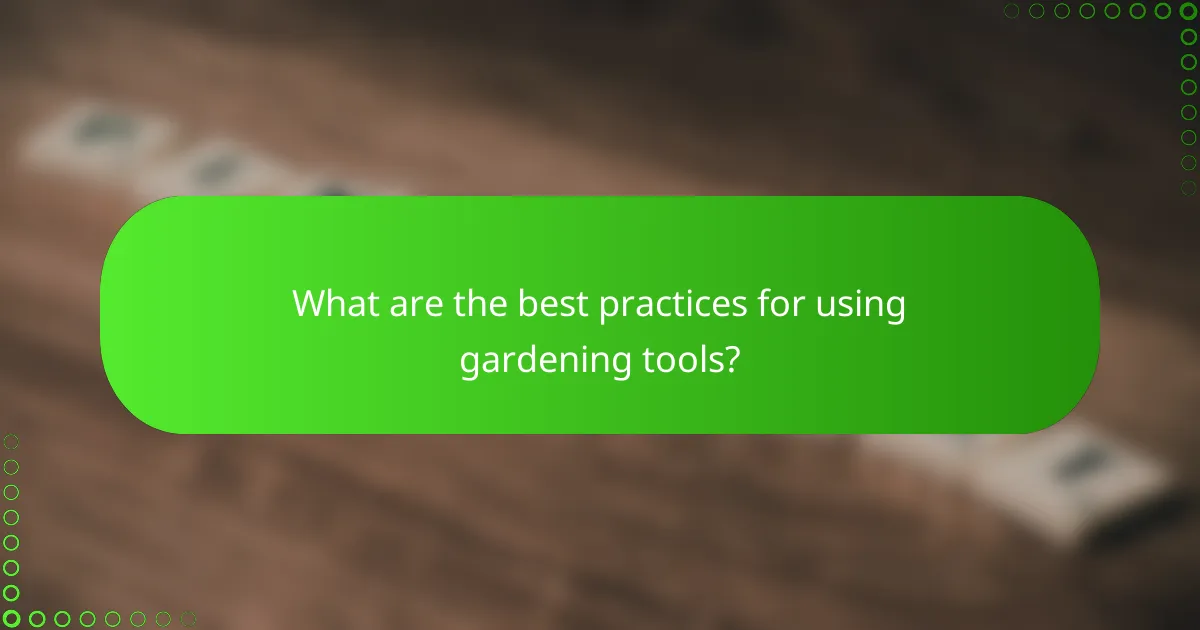
What are the best practices for using gardening tools?
To ensure optimal performance and longevity of gardening tools, follow best practices that include proper handling, regular maintenance, and appropriate storage. These practices help prevent damage, enhance efficiency, and extend the lifespan of your equipment.
Proper Handling Techniques
Using gardening tools correctly is essential for both safety and effectiveness. Always grip tools firmly and use them as intended to avoid accidents or injuries. For example, when using a shovel, keep your back straight and use your legs to lift, reducing strain on your body.
Be mindful of your surroundings while working. Clear debris from your workspace and ensure that you have enough room to maneuver tools safely. This reduces the risk of accidents and helps maintain focus on the task at hand.
Regular Maintenance Practices
Regular maintenance is crucial for keeping gardening tools in top condition. Clean tools after each use to remove soil, sap, and debris, which can cause rust and deterioration. A simple rinse with water and a scrub with a brush can suffice for most tools.
Sharpen blades regularly to ensure efficient cutting. Dull tools require more effort and can lead to injury. Depending on usage, sharpening may be needed every few weeks to months. Additionally, lubricate moving parts to prevent rust and ensure smooth operation.
Appropriate Storage Solutions
Storing gardening tools properly is vital for their longevity. Keep them in a dry, sheltered area to prevent rust and damage from the elements. A dedicated shed or garage is ideal, but if that’s not available, consider using a tool rack or wall-mounted hooks.
Organize tools by type and frequency of use. Frequently used tools should be easily accessible, while less common items can be stored further away. This organization not only protects the tools but also saves time when you need them.



